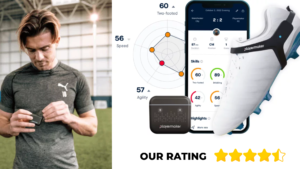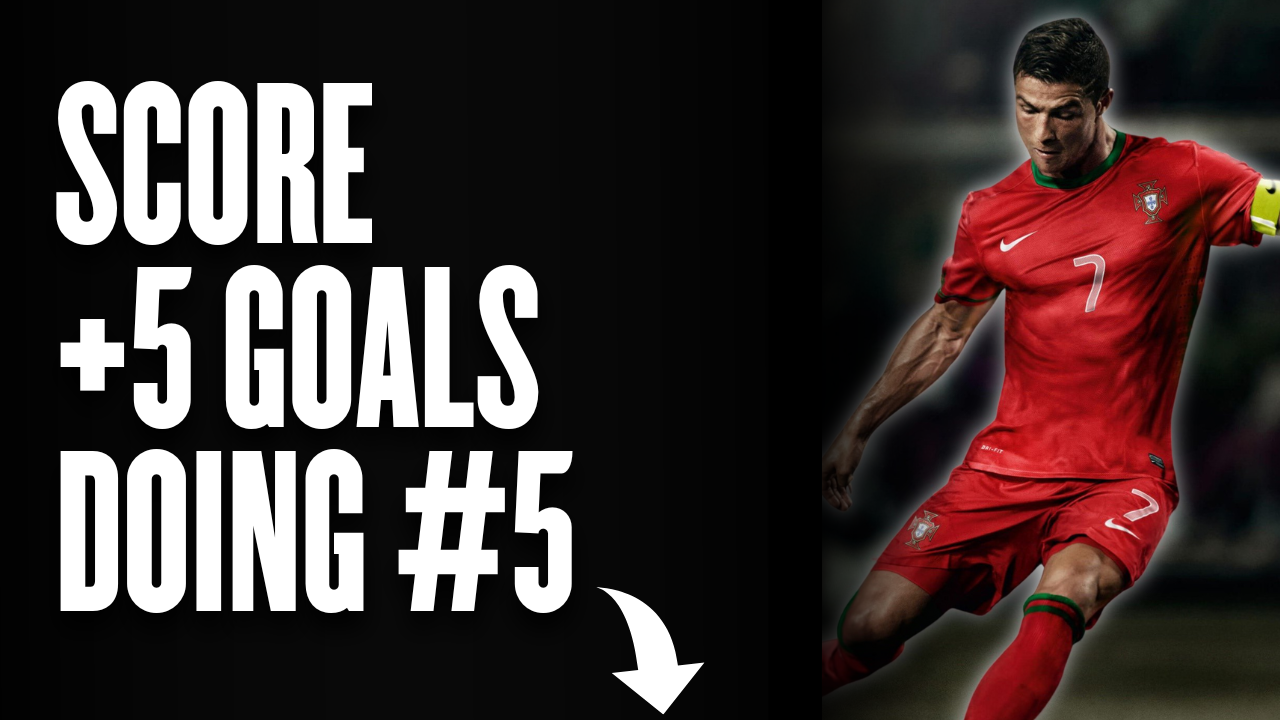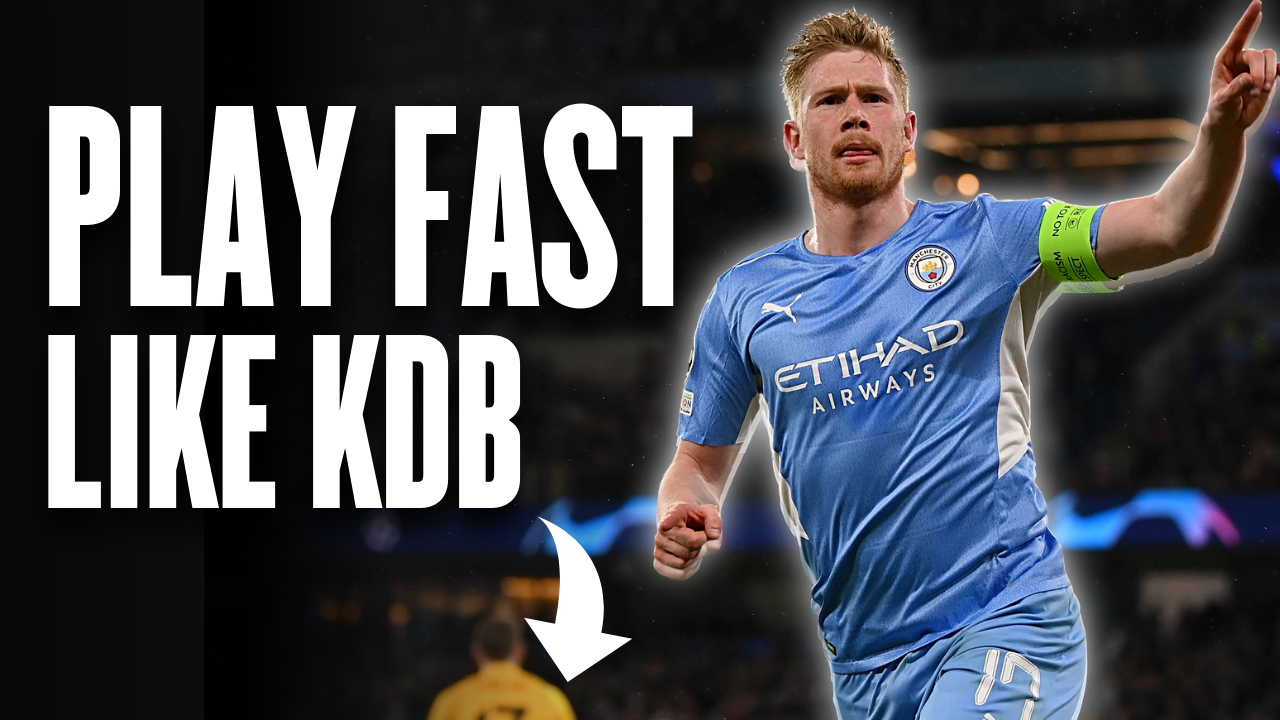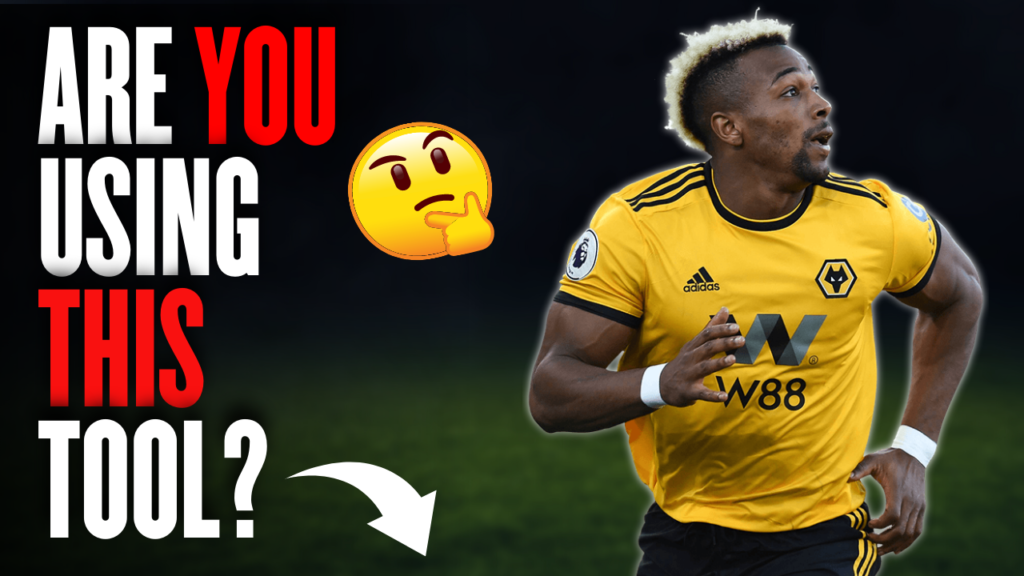
Plyometrics; The Neglected Gem
Football/Soccer is a speed- and power-dominant sport. These two are needed in almost every action you execute; no matter if we’re talking about a linear sprint, a cut, or a shot; speed and power are undoubtedly two of the most important physical qualities in modern football.
But how do you turn your speed and power from amateur to elite level?
To be honest, that’s a really complex process. However, in this article, I am going to share one training tool with you that has helped us and our athletes see some really good results in terms of speed and power; plyometric training.
NOT IN THE MOOD TO READ? HERE’S THE VIDEO
Plyometrics & Speed/Power In Football/Soccer
Now before we dive any deeper, it is important for you to understand the correlation between plyometric training and the speed and power you need in football.
Let’s first define speed, or better put, velocity.
What Is Speed/Velocity In Football/Soccer?
Velocity is the rate at which an object changes its position. In the context of football/soccer, it is the time a body needs to move from point A to point B.
We can break speed down into linear and multidirectional speed.
What Is Power In Football/Soccer?
On the other hand, we have power which is the rate at which you exert force. In the context of football/soccer, power is equal to how fast you’re able to produce high amounts of force.
Power (W) = Force (N) x Velocity (m/s)
Now, how do these two training qualities relate to plyometric training you may ask.
What Are Plyometrics?
So plyometrics are exercises that involve fast and repeated contractions of the muscles, otherwise known as the Stretch-Shortening Cycle (SSC).
This cycle we see in plyometric actions is present in a variety of football movements; sprinting, jumping, and cutting directions.
So plyometric training basically mimics the movements as well as the rate at which you exert force during the various actions of the game.

*As an affiliate, I'm earning from qualifying purchases without any extra charges being placed on you.
Put in simple words; plyometrics will help you generate more force in shorter time frames.
They will help you develop power, IF, of course, you use them properly. The research, actually, is pretty clear in regards to their effectiveness. Research suggests that plyometrics should be incorporated into almost every individual’s training regimen, in some way, shape, or form.
Categorizing Plyometrics Exercises
Now, there’s a variety of ways you can use plyometrics to develop speed and power which we will go over right now.
So let’s first categorize the various types of plyometric exercises based on their characteristics.
VERTICAL VS HORIZONTAL VS MULTIDIRECTIONAL PLYOMETRICS
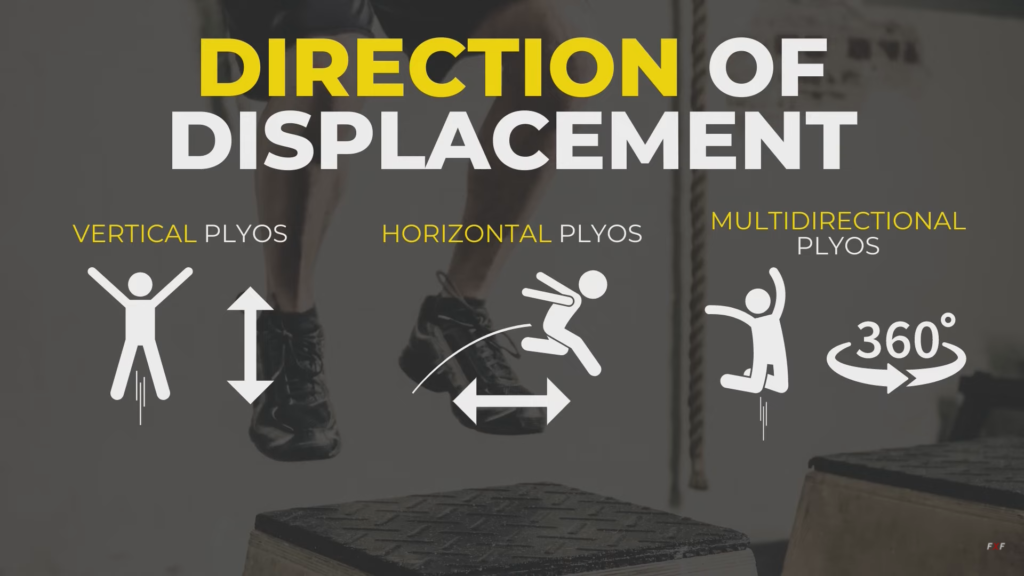
First of all, we can categorize plyometrics in terms of the direction your body moves.
In that sense, we have vertical plyometrics, horizontal, as well as multidirectional ones.
You can use all of them to develop various qualities of your physical performance.
For example, a vertical plyometric seems to be the more ideal training option to improve your jumping ability while horizontal ones seem to be having a better transfer to your linear acceleration.
This, of course, doesn’t mean that each plyometric exercise will only improve one area of your physical performance.
For example, linear acceleration improvements might be highly correlated with horizontal plyometrics but vertical and multidirectional ones can ALSO help improve your linear speed through improved coordination or the improvement of your muscles’ elastic properties or increased joint stiffness.
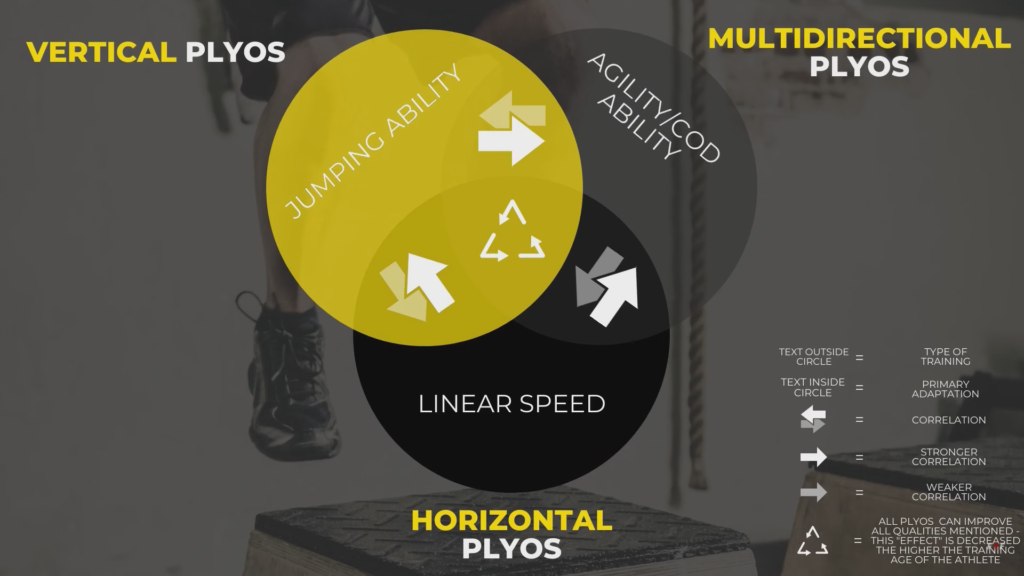
So don’t get caught up using only one type of plyometrics just because you can’t jump high or sprint fast.

*As an affiliate, I'm earning from qualifying purchases without any extra charges being placed on you.
Variety is important, especially at the beginning. As you progress, a more specific training stimulus would be required. This is to avoid a plateau, but again, that comes with a more experienced athlete.
GROUND CONTACT TIME (GCT) & PLYOMETRICS
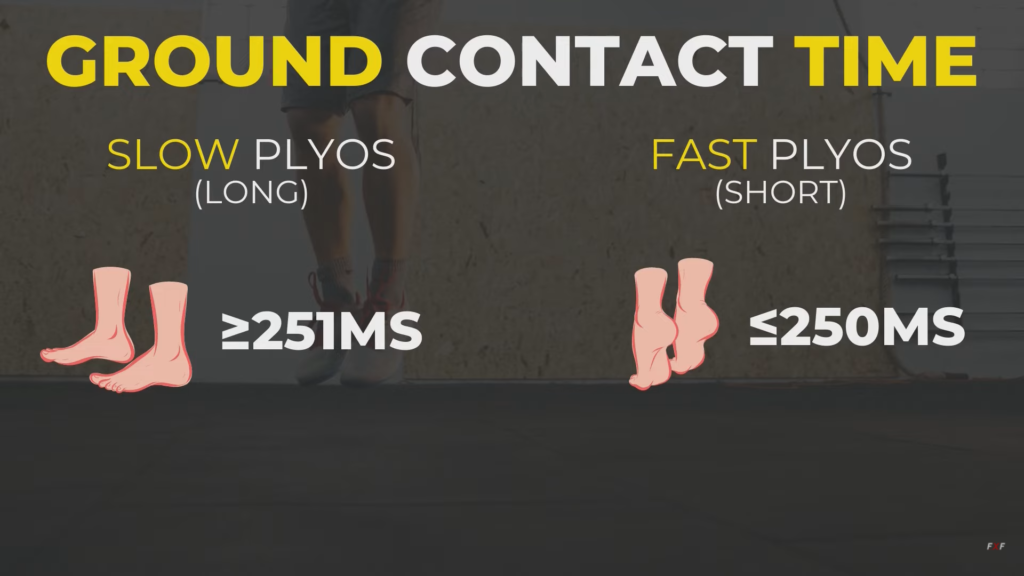
Now plyometrics aren’t only categorized based on the direction the displacement of your body happens.
We can also split them based on how much time you spend on the floor (GCT or Ground Contact Time).
As a result, we have slow and fast, otherwise known as long and short plyometrics.
Long or slow plyometrics are those exercises at which the athlete spends more than 251ms on the ground.
On the other hand, short or fast plyometrics are those where you spend less or exactly 250ms on the ground.
Now what you are going to use and when you will be using it is highly dependent on various factors such as your training age, your individual training needs, the training block you’re in, etc.
To offer you some perspective though, you can always refer to the force-velocity curve.
Slow plyometrics tend to be more focused on force development, while fast plyometrics are closer to the velocity end of the curve and focus more on expressing force as fast as possible.
Both have a time and place in one’s yearly, or monthly, training cycle. Ultimately it’s in your or your coach’s hands to decide what qualities you need to emphasize more on.
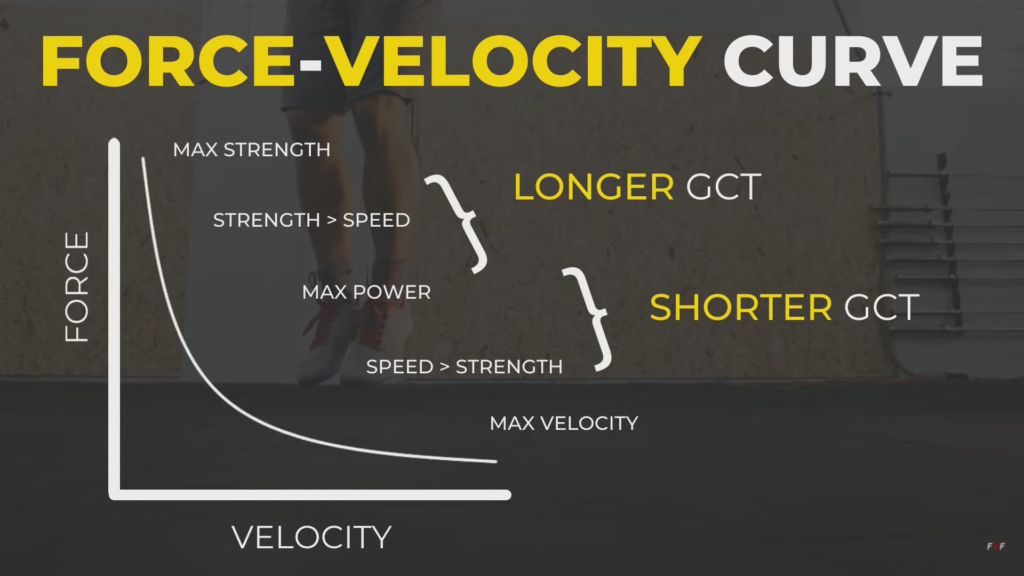
EXTENSIVE VS INTENSIVE PLYOMETRICS
Lastly, there’s another factor that helps set apart the different kinds of plyometric training and that is their intensity.
Now intensity is a metric that you can’t monitor as easily as volume. That’s mainly because its intensity is dependent upon each individual’s effort.
If the effort in one exercise should be maximal and you’re only performing sub-max efforts, this lower intensity will translate into sub-max results.
So based on how high the impact is and how high the involvement of the nervous system is, we can categorize plyometric movements into intensive and extensive plyometrics.
Intensive plyometrics are those that require higher power outputs and therefore place higher impact and demands on the joints and the neuromuscular system.
This includes max effort exercises such as depth jumps, countermovement jumps, alternating bounds, and top velocity sprints.
Extensive plyometrics, on the other hand, tend to be lighter on the neuromuscular system and require sub-maximal efforts.
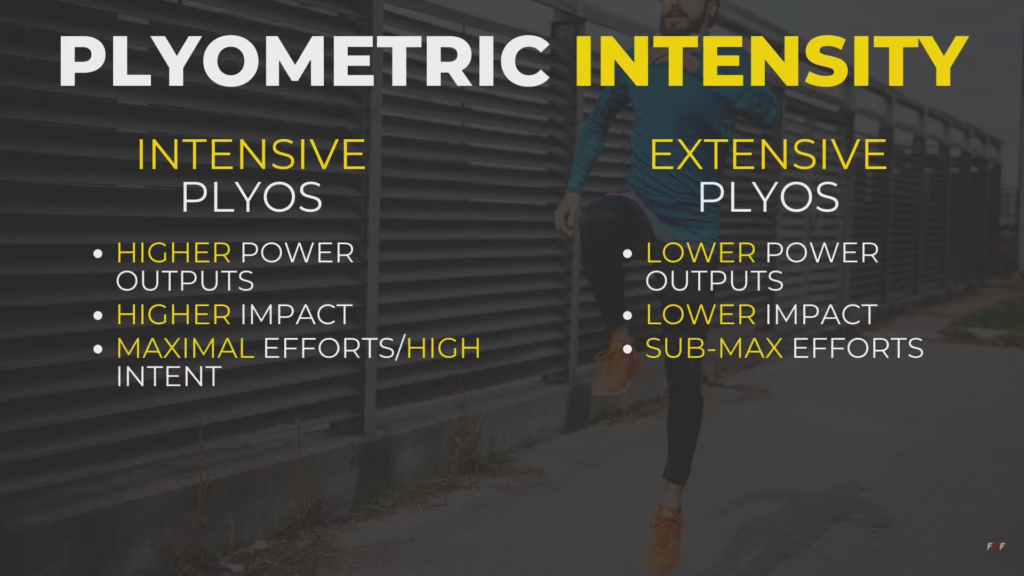
Both extensive and intensive plyometrics are important and should be used simultaneously throughout the training year.
Extensive ones are great for preparing the athlete ahead of a highly demanding training cycle by building a resilient musculotendinous system and help you build that stiffness in your joints which in return makes you more springy and elastic in how you move. Extensive plyometrics include exercises such as hops and skips.
On the other hand, intensive plyometrics shall also play a crucial part in one’s training regimen. It is during those maximal efforts that adaptations in power and speed happen the most.
I know, all of this info might be really confusing to you, the everyday footballer that’s just here for a workout, but if you got so far, props to you, keep reading a bit more to gain all the important nuggets, not a generic workout.
How To Use Plyometrics As A Football/Soccer Player?
Since athletes use plyometrics to develop speed and power it makes sense to use the training principles you use to develop those exact qualities.
So for intensive plyometrics consider a low training volume of 2 to 6 reps and 2 to 5 sets with varying resistance based on your training goal and 3 to 5 minute rest periods.
Make sure to take all that rest time. We call them intensive because we want you to be firing at all cylinders and hit those maximal jumping heights and distances.
The funny thing about plyometrics is that they don’t always have to be maximal.
In the case of extensive plyometrics where the impact and the neural demands are low, you can use higher training volumes.
As a rule of thumb, consider a higher training volume of 10-25 reps and 2 to 4 sets with little to no added load. You can decrease rest time but keep your efforts sub-maximal and repetitive.
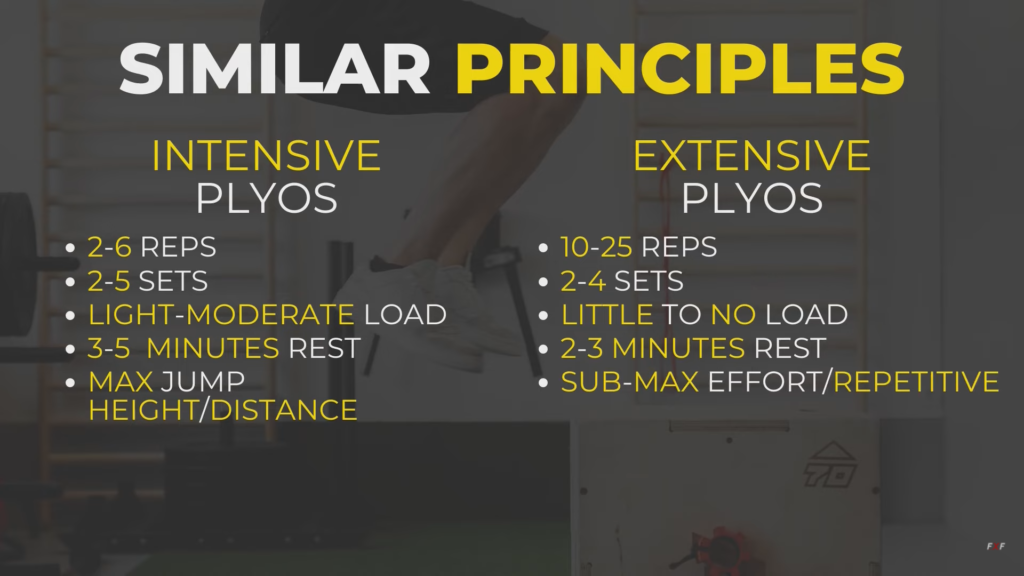
Progressive Overload
I also wanted to touch upon the principle of progressive overload. As with ANY training activity, you shall first put the emphasis on lighter, more extensive plyometrics, that will prepare you for the main stress. At the same time, also add some intensive work but at minimal doses. Make sure you’re moving properly, don’t rush things, take your rest, and follow the plan.
Here at FootXFit, we like to include a variety of plyometrics in our athletes’ programs no matter what training cycle they’re in. The analogies of each training stimulus are what we really change and modify based on our athlete’s needs.
So guys, if you wanna develop elite-level athleticism for football, plyometric training should probably become one of your best friends.
Now, if you wanna leave all the guesswork to the side though, and take action on a set plan, consider working with us.
Just click here and fill out the application form to join our remote online coaching program where we will work with you 1on1 and help you progress your career to the next level.

Liked this article? Make sure to SHARE it with your teammates and coaches! Also, don’t forget to follow us on INSTAGRAM where we post daily content to help you #levelUP your performance!
REFERENCES
[1] Ramirez-Campillo R, Gentil P, Negra Y, Grgic J, Girard O. Effects of Plyometric Jump Training on Repeated Sprint Ability in Athletes: A Systematic Review and Meta-Analysis. Sports Med. 2021 Oct;51(10):2165-2179. doi: 10.1007/s40279-021-01479-w. Epub 2021 Apr 28. PMID: 33909274.
[2] Moran J, Ramirez-Campillo R, Liew B, Chaabene H, Behm DG, García-Hermoso A, Izquierdo M, Granacher U. Effects of Vertically and Horizontally Orientated Plyometric Training on Physical Performance: A Meta-analytical Comparison. Sports Med. 2021 Jan;51(1):65-79. doi: 10.1007/s40279-020-01340-6. PMID: 32897526.
[3] Ramirez-Campillo R, Castillo D, Raya-González J, Moran J, de Villarreal ES, Lloyd RS. Effects of Plyometric Jump Training on Jump and Sprint Performance in Young Male Soccer Players: A Systematic Review and Meta-analysis. Sports Med. 2020 Dec;50(12):2125-2143. doi: 10.1007/s40279-020-01337-1. PMID: 32915430.
[4] Pardos-Mainer E, Lozano D, Torrontegui-Duarte M, Cartón-Llorente A, Roso-Moliner A. Effects of Strength vs. Plyometric Training Programs on Vertical Jumping, Linear Sprint and Change of Direction Speed Performance in Female Soccer Players: A Systematic Review and Meta-Analysis. Int J Environ Res Public Health. 2021 Jan 6;18(2):401. doi: 10.3390/ijerph18020401. PMID: 33419178; PMCID: PMC7825561.


